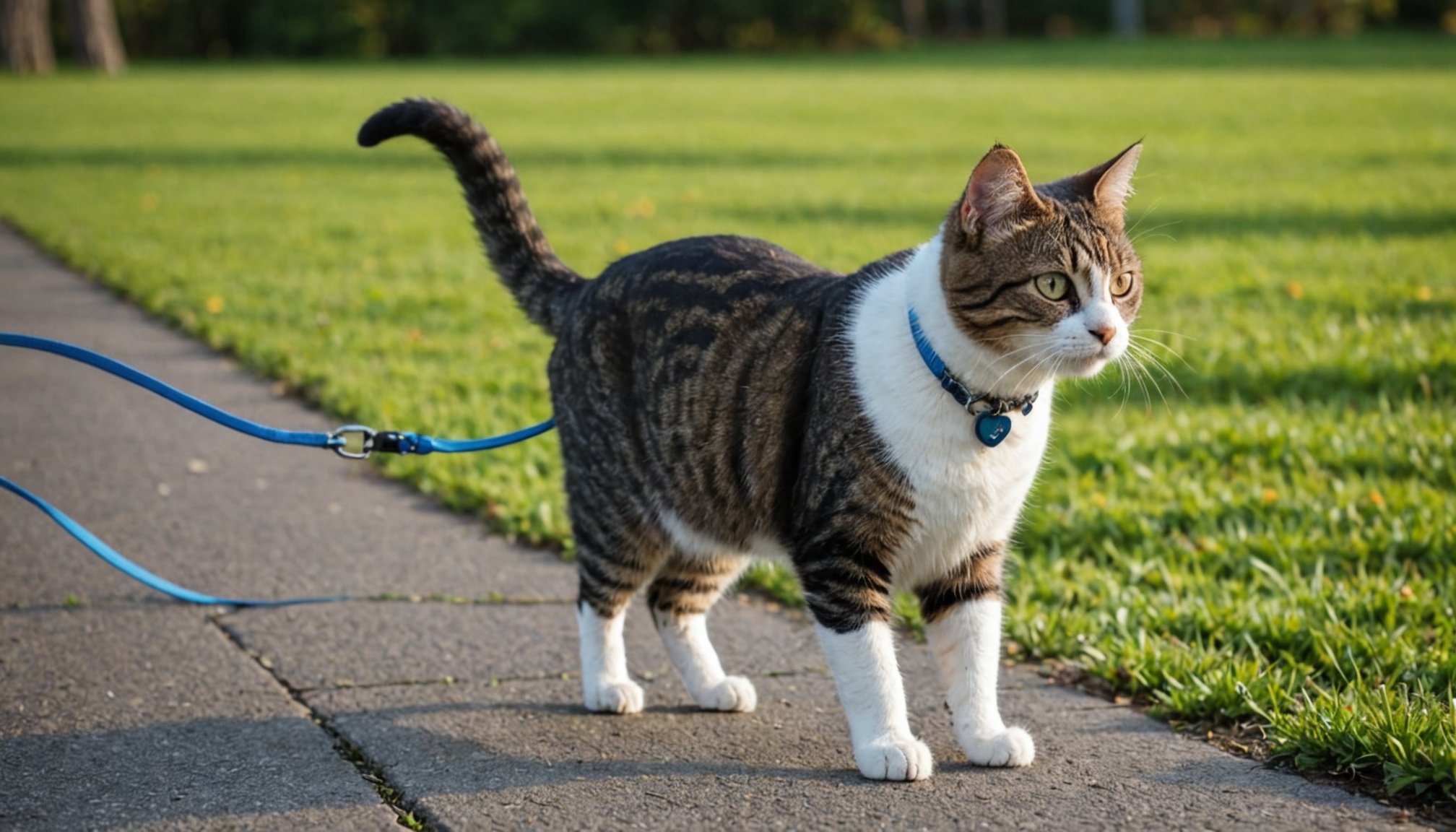Aligning the freedom of the outdoors with the safety of a leash might sound like a contradiction when it comes to cats. However, many pet owners have discovered the delight of sharing outdoor adventures with their feline companions without compromising safety. Leash training your cat can open up a world of exploration while ensuring they remain secure at all times. This comprehensive guide aims to equip you with the knowledge and techniques to train your cat for leash walking safely and confidently.
Understanding Your Cat’s Nature
Before embarking on the journey of leash training, it’s crucial to comprehend your cat’s inherent instincts and behaviors. Unlike dogs, cats are inherently independent creatures, possessing a natural desire for exploration and curiosity about their surroundings.
Also to discover : How can I maintain my cat’s coat health during seasonal shedding periods?
Observing these traits is vital, as acknowledging your cat’s natural tendencies will help you tailor the leash training process to suit their unique needs. Cats, being territorial creatures, often feel a sense of ownership over their environment, and any deviation from this comfort zone can initially unsettle them.
When preparing your cat for leash training, it’s essential to focus on their comfort and confidence. A successful training process acknowledges the individuality of each cat and respects their natural inclinations, paving the way for mutual trust and cooperation. By understanding that some cats are naturally more adventurous than others, you can manage expectations and progress at a pace that suits your feline friend.
Also to read : Essential tips for easing your cat”s transition to a new climate after relocation
Selecting the Right Equipment
Choosing the appropriate gear is a pivotal aspect of ensuring the safety and comfort of your cat during leash training. The two main components required are a well-fitting harness and a sturdy leash.
A harness is more suitable than a collar, as it distributes pressure evenly, reducing the risk of injury. When selecting a harness, prioritize products designed specifically for cats, as they provide a snug fit without restricting movement. The harness should fit comfortably around your cat’s body, allowing you to slide two fingers between the harness and their skin.
Leashes come in various styles, lengths, and designs. Opt for a lightweight leash that does not weigh down your cat, and consider retractable options that offer a balance between freedom and control. Introducing your cat to the harness and leash indoors helps them acclimate, making them more receptive when you begin outdoor expeditions.
The right equipment essentially serves as an interface between your cat’s natural instincts and the controlled outdoor environment. Investing in high-quality gear ensures a positive experience for both you and your feline companion.
Step-by-Step Leash Training Guide
Training your cat to walk on a leash is a process marked by patience, consistency, and gradual exposure. Here’s a step-by-step guide to help you and your cat navigate this journey successfully:
1. Introduce the Harness: Start by allowing your cat to sniff and explore the harness. Leave it near their favorite spot to build familiarity without the pressure of wearing it.
2. Comfortable Fit: Once your cat is comfortable with the presence of the harness, gently put it on them for short periods. Use treats and positive reinforcement to associate the harness with pleasant experiences.
3. Indoor Practice: Attach the leash and let your cat explore indoors. Supervise these sessions to ensure they are relaxed and not overwhelmed by the new sensation.
4. Gradual Outdoor Exposure: Once your cat is comfortable indoors, transition to outdoor environments. Start in a quiet, enclosed area, gradually increasing exposure as your cat builds confidence.
5. Follow Their Lead: Allow your cat to set the pace. They may stop frequently to investigate their surroundings, which is natural. Remain patient and let them explore within the safety of the leash.
Through this structured approach, your cat will gradually become accustomed to the leash, paving the way for safe and enjoyable outdoor adventures.
Ensuring Safety and Addressing Concerns
Keeping your cat safe while walking on a leash extends beyond equipment and training. Awareness of potential dangers and being prepared ensures your cat remains secure throughout the experience.
1. Supervision: Always supervise your cat during these walks. Stay attentive to sudden movements and potential escape attempts. Be prepared to gently redirect their attention if they become overly enthusiastic or fearful.
2. Environmental Awareness: Avoid busy roads and noisy areas that could startle your cat. Opt for quiet parks or yards where they can enjoy the sights and sounds without overwhelming stimuli.
3. Weather Considerations: Cats are sensitive to extreme temperatures. Avoid walks during peak heat or cold to prevent discomfort or health risks.
4. Emergency Preparedness: Carry a small first-aid kit and water for hydration, especially on longer outings. In case of emergencies, having these essentials can make a significant difference.
By prioritizing safety and being mindful of your cat’s well-being, leash walks can become a routine filled with discovery and enjoyment.
Leash training your cat is a rewarding endeavor that allows you to share the wonders of the outdoors while ensuring their safety. By understanding your cat’s nature, choosing the right equipment, following a structured training plan, and prioritizing safety, you can transform your walks into cherished adventures. Remember, as you embark on this journey, patience and perseverance are your best allies. With the right approach, you and your feline friend can enjoy many safe and fulfilling outdoor escapades together.











